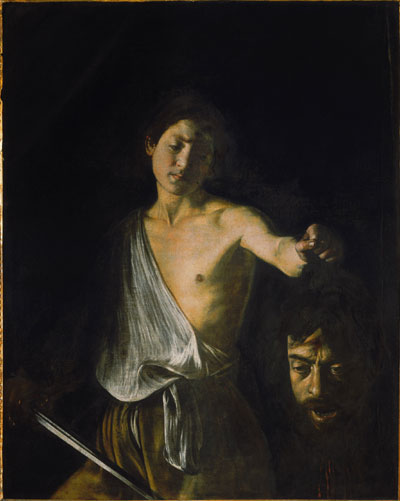I recently spent several months in
Some scholars think this bloody scene of decapitation is Caravaggio’s last canvas, painted just before his death in 1610. Others place it four years earlier, when he was on the run from papal justice and under sentence of death for having arguably castrated and certainly killed a man named Ranuccio Tomassoni, in a swordfight that took place on a tennis court. I favour the earlier date, partly on grounds of style, partly because the message embodied in the painting with such plaintive vividness fits so closely with the artist’s desperate circumstances at the time.
The picture’s subject is David’s well-known act of giant-slaying, recounted in I Samuel, 48-51: a familiar story, but treated by Caravaggio in a strikingly unfamiliar way. His sombre young hero seems peculiarly unexultant in his moment of triumph. He holds his grisly prize at arm’s-length, staring down almost absently at the trails of blood still pouring from the severed neck of his vanquished foe. Mild disgust is mingled, in David’s complicated and contemplative expression, with an infinite sadness. For his part Goliath seems still to be screaming, in an extension of his death agony. Light glints on his irregular row of front teeth and is reflected, too, in the wetness...


